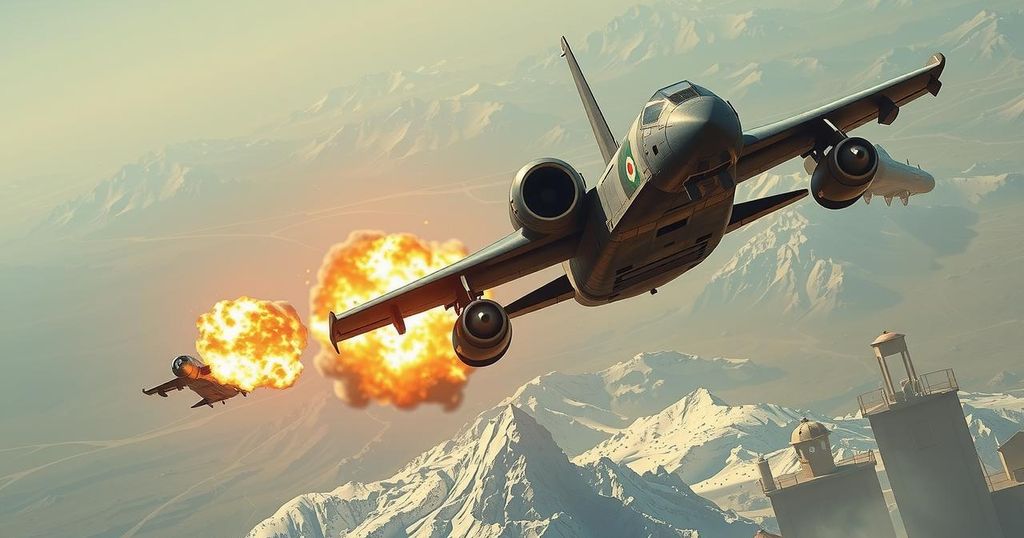New Dynamics in the Syrian Civil War Following Assad’s Ouster
The fall of Bashar al-Assad has transformed the Syrian civil war landscape, with the Islamist group Hayat Tahrir al-Sham (HTS) rising as a key player under leader Abu Mohammed al-Golani. As tensions mount between opposing factions, particularly between HTS and the U.S.-backed Syrian Democratic Forces (SDF), concerns over potential conflict increase. Concurrently, Israel’s military actions pose further complications, while the Biden administration faces challenging foreign policy decisions.
The recent demise of President Bashar al-Assad has markedly altered the landscape of Syria’s prolonged civil war, igniting excitement among opposition factions while breeding apprehension over a tumultuous future. Central to this upheaval is the Islamist group Hayat Tahrir al-Sham (HTS) and its leader, Abu Mohammed al-Golani, whose commitment to avoiding extremism and fostering an inclusive governance structure remains in question. The emergence of new frontlines underscores escalating tensions between rebel coalitions and the U.S.-backed Syrian Democratic Forces (SDF), particularly as Turkey’s governmental interests align against the SDF, perceived as an affiliate of the PKK.
The situation in Kobani, a previous stronghold against ISIS, exemplifies the precariousness of the current status quo, with Riad Darar of the SDF predicting significant conflict in the region. He highlighted worries regarding the intentions of HTS, viewing its leadership as monopolistic and exclusionary, which fosters distrust among the broader Syrian populace. HTS has evolved from the Nusra Front and has a contentious history marked by past alliances with extremist factions, adding depth to its current leadership challenges.
Simultaneously, Israel has taken advantage of the turmoil to expand its military presence, complicating the already intricate dynamics of Syria’s civil conflict. Efforts to address Israeli incursions and maintain peace are underway, although the return of international peacekeepers seems uncertain. Amidst this backdrop, U.S. policy remains in flux as the Biden administration grapples with concerns from Israel and Turkey, reiterating the imperative to preserve regional stability.
Both the U.S. and Turkey remain hesitant concerning HTS, with the U.S. continuing to classify it as a terrorist organization. The geopolitical entanglements escalate as the United Nations highlights infractions against long-standing truces, thereby imposing additional pressures on the already complex situation. As the conflict intensifies, the future direction of Syria, under the evolving leadership of Golani and the HTS, remains unpredictable, warranting close international scrutiny.
Syria’s civil war, ongoing for nearly 14 years, has seen turbulent shifts such as the downfall of President Bashar al-Assad, which marks a critical turning point. With the entry of the Islamist group Hayat Tahrir al-Sham (HTS) into a significant role, the outlook for governance in Syria has raised many questions among external powers and local factions. The rising tensions between various military factions, including the U.S.-backed Syrian Democratic Forces (SDF) and Turkey’s interests regarding the Kurdish PKK, further complicate the conflict. Israel’s military actions in the region add another layer of complexity, with geopolitical consequences reverberating through alliances and adversarial positions within and outside of Syria.
In conclusion, the recent developments in Syria highlight a shifting landscape following the removal of Bashar al-Assad. The rise of HTS under Abu Mohammed al-Golani presents both opportunities and challenges for Syria’s future governance. The involvement of regional powers, complicated by ongoing military actions and geopolitical interests, suggests that stability remains elusive. The evolving conflict necessitates continuous engagement from international stakeholders to navigate the complexities that lie ahead.
Original Source: www.newsweek.com








Post Comment